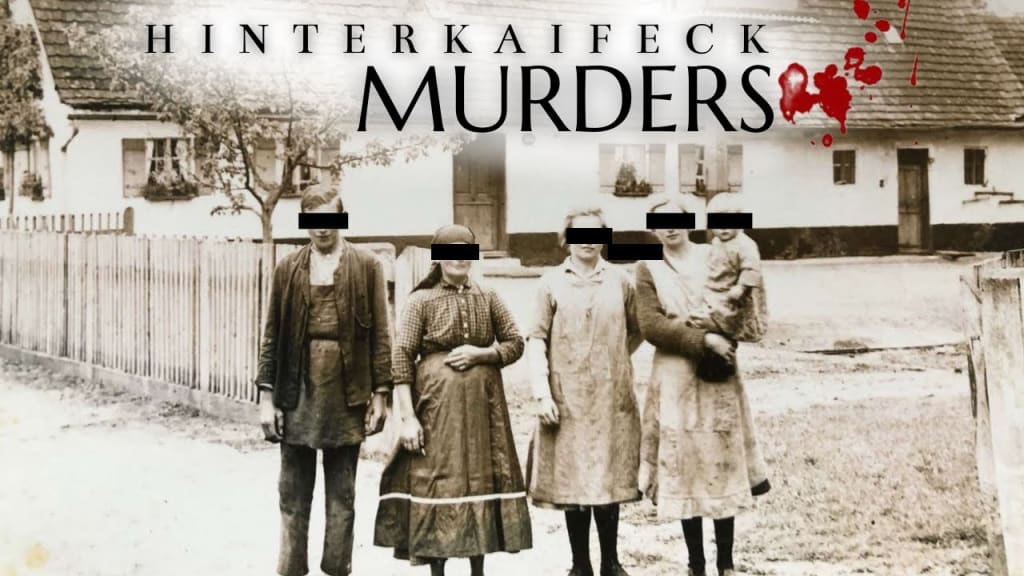
On the night of March 31st, 1922, the six inhabitants of the Hinterkaifeck farmstead in Germany were brutally murdered. The Hinterkaifeck murders remain one of the most baffling unsolved crimes in German history, and have captivated the public's imagination for over a century.
The Hinterkaifeck farmstead was located in a remote rural area, approximately 70 miles north of Munich. The family who lived there consisted of Andreas and Cäzilia Gruber, their daughter Viktoria, Viktoria's two children, and a maid named Maria Baumgartner. The farmstead was situated in a secluded spot, surrounded by woods, and could only be accessed by a single road.
The events leading up to the Hinterkaifeck murders are shrouded in mystery. Andreas Gruber, the patriarch of the family, had reported hearing strange footsteps in the attic, and had also discovered footprints leading from the woods to the farmstead. He had even found a newspaper on the property that no one in the family had purchased. Despite these disturbing incidents, the family had not contacted the police.
On the evening of March 31st, Viktoria's neighbors became concerned when they noticed that none of the family members had been seen for several days. When they went to investigate, they found the entire family had been brutally murdered with a mattock, a type of pickaxe. Even more chilling was the fact that the murderer(s) had remained on the property for several days after the killings, feeding the livestock and even preparing meals in the kitchen.
The investigation into the Hinterkaifeck murders was hampered by several factors. For one, the scene had been tampered with by curious onlookers, and crucial evidence had been destroyed or removed. Additionally, the police had a difficult time piecing together a timeline of events, since the murders had occurred several days prior to their discovery.
Despite these challenges, the police did uncover some evidence that may shed light on the identity of the murderer(s). For example, the footprints leading from the woods to the farmstead had been made by a pair of shoes that did not match any belonging to the family. Additionally, several witnesses had reported seeing a man with a suitcase in the area around the time of the murders.
One of the most intriguing pieces of evidence was the fact that the murders had been committed with a mattock, a type of pickaxe. The mattock used in the killings had belonged to the Gruber family, and was kept in the barn. However, the police noted that the mattock had been recently sharpened, which suggested that the murderer(s) had brought their own tool to the scene. The police also discovered a newspaper in the house that did not belong to the family, which could have been left behind by the murderer(s).
One suspect in the Hinterkaifeck murders was a man named Lorenz Schlittenbauer, who had a longstanding feud with Andreas Gruber. Schlittenbauer had allegedly threatened Gruber several times, and had even gone so far as to take legal action against him. However, Schlittenbauer had an alibi for the night of the murders, and his shoes did not match the footprints found at the scene.
Another suspect was a traveling salesman named Anton Lechner. Lechner had been in the area at the time of the murders, and had reportedly made comments about the Gruber family that were interpreted as threatening. Additionally, Lechner had a criminal record and was known to carry a mattock. However, Lechner had left the area before the murders were discovered, and was never seen again.
In recent years, several theories have emerged about the identity of the murderer. Some have suggested that the murders were committed by a group of robbers who were looking for money that was rumored to be hidden on the farmstead. Others have speculated that the murders were the result of a family feud, or that they were committed by a mentally unstable individual.
Despite the various theories and suspects, the Hinterkaifeck murders remain unsolved to this day. The case continues to fascinate true crime enthusiasts and armchair detectives alike, who pore over the available evidence in an attempt to piece together what really happened on that fateful night.
One of the reasons that the Hinterkaifeck murders continue to captivate the public's imagination is the sheer brutality of the crime. The fact that the murderer(s) remained on the property for several days after the killings, performing menial tasks like feeding the livestock and cooking meals, only adds to the eerie and unsettling nature of the crime.
Another reason for the enduring fascination with the Hinterkaifeck murders is the mystery that surrounds the identity of the murderer(s). Despite the fact that numerous suspects have been identified over the years, none of them have been definitively linked to the crime. This has led to a number of wild theories and speculations, which only add to the intrigue surrounding the case.
Ultimately, the Hinterkaifeck murders remain one of the most perplexing and haunting unsolved crimes in German history. Despite the passage of nearly a century, the case continues to defy resolution, and the identity of the murderer(s) remains a mystery. While advances in forensic science and technology may one day shed new light on the case, for now the Hinterkaifeck murders remain a chilling reminder of the dark potential of human nature.





Comments
There are no comments for this story
Be the first to respond and start the conversation.